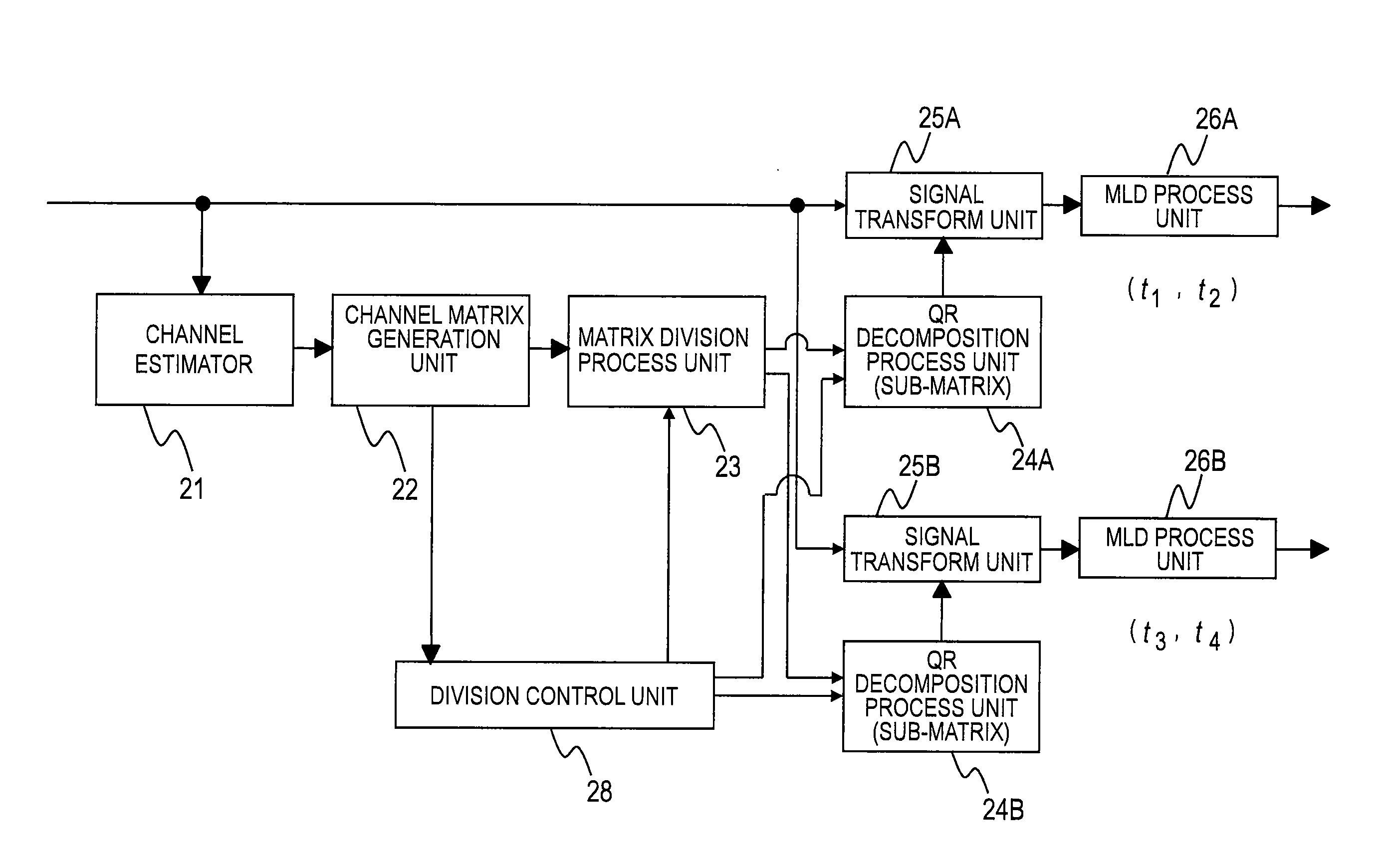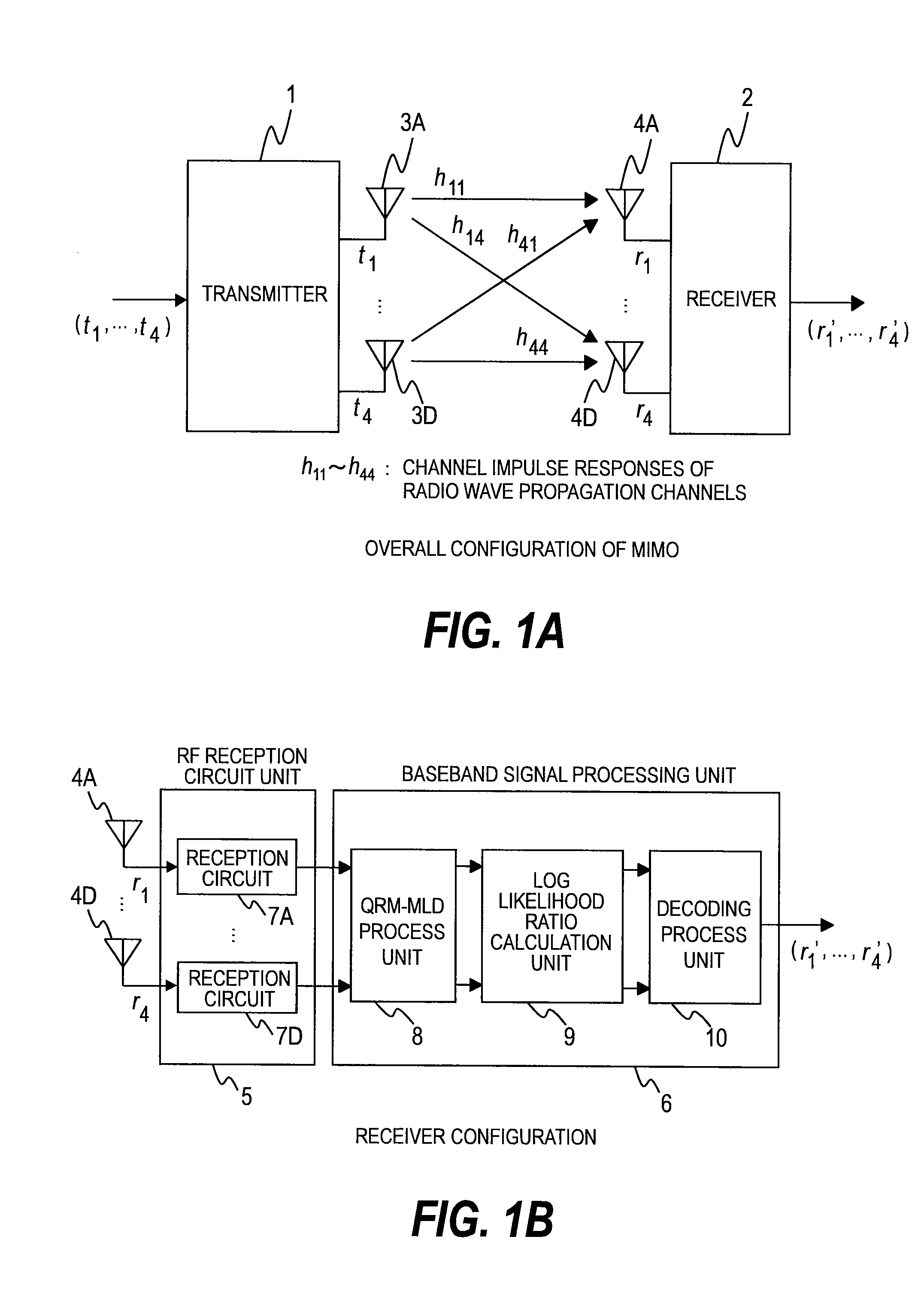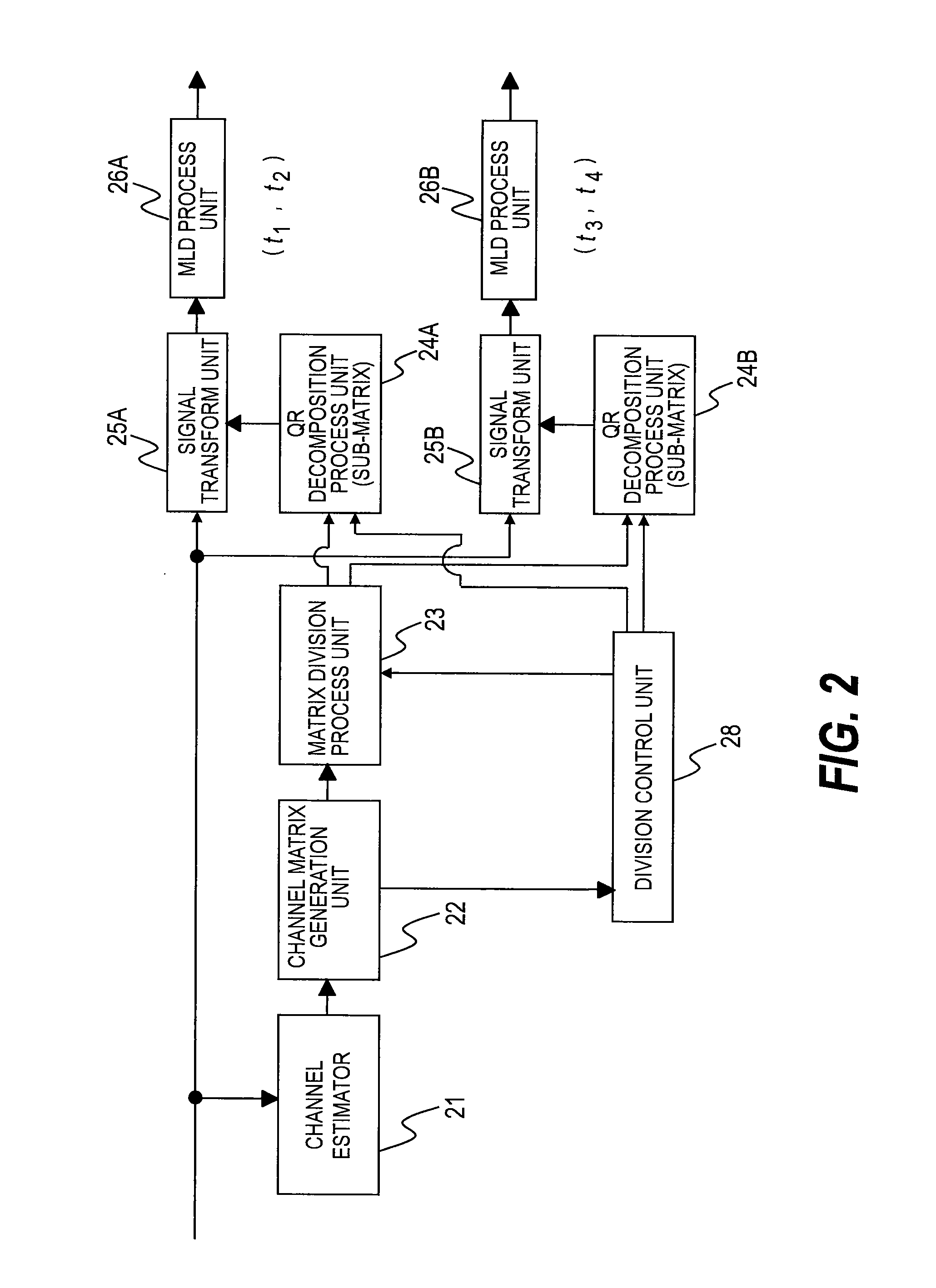Maximum likelihood decoding method, equipment, and receiver
a decoding method and probability technology, applied in the field of maximum likelihood decoding process for received signals, can solve the problem of deteriorating quality of estimation solutions, and achieve the effect of improving the quality of estimation solutions and reducing computational complexity
- Summary
- Abstract
- Description
- Claims
- Application Information
AI Technical Summary
Benefits of technology
Problems solved by technology
Method used
Image
Examples
first embodiment
[0040]A MIMO communication system according to a first embodiment of this invention will be described.
[0041]FIG. 1A is a configuration diagram of the MIMO communication system according to the first embodiment of this invention.
[0042]The MIMO communication system includes a transmitter 1, a receiver 2, transmitter antennas 3 (3A to 3D), and receiver antennas 4 (4A to 4D). Hereinafter, the transmitter antennas 3A to 3D may be collectively referred to as the transmitter antennas 3. The receiver antennas 4A to 4D may also be collectively referred to as the receiver antennas 4.
[0043]The transmitter 1 simultaneously sends transmission data items (t1, t2, t3, t4) in the form of transmitted signals at an identical frequency by using the four different transmitter antennas 3. It should be noted that the transmitted signals are affected by channel impulse responses (h11 to h44) of propagation channels.
[0044]The receiver 2 receives the signals, which have been affected by the channel impulse ...
second embodiment
[0088]In a second embodiment of this invention, multiple transmitted-signal estimation solutions are obtained in the first embodiment by applying the MLD process to the sub-matrices, and, in order to improve the quality of a solution, an integrated MLD process is performed by combining the obtained multiple transmitted-signal estimation solutions.
[0089]FIG. 6 is a configuration diagram of a QRM-MLD process unit 8 according to the second embodiment of this invention.
[0090]In the second embodiment, unlike in the first embodiment, the QRM-MLD process unit 8 includes an integrated MLD process unit 27 at a subsequent stage of the MLD process units 26.
[0091]The integrated MLD process unit 27 performs an integrated MLD process by combining transmitted-signal estimation solutions obtained by the MLD process units 26.
[0092]FIG. 7 is a flowchart of a division QRM-MLD process according to the second embodiment of this invention.
[0093]Steps 301 to 304 correspond to the steps 301 to 304 shown in...
PUM
 Login to View More
Login to View More Abstract
Description
Claims
Application Information
 Login to View More
Login to View More - R&D
- Intellectual Property
- Life Sciences
- Materials
- Tech Scout
- Unparalleled Data Quality
- Higher Quality Content
- 60% Fewer Hallucinations
Browse by: Latest US Patents, China's latest patents, Technical Efficacy Thesaurus, Application Domain, Technology Topic, Popular Technical Reports.
© 2025 PatSnap. All rights reserved.Legal|Privacy policy|Modern Slavery Act Transparency Statement|Sitemap|About US| Contact US: help@patsnap.com



